Gibraltar

A quick trip to Gibraltar to see another British outpost.
Quite a fascinating place - if extremely small - Gibraltar has quite a history.
Gibraltar is a beacon which signals the position of the Strait of Gibraltar, the narrow neck which separates Europe from Africa.
Being limestone, the Rock - which is geologically very different from the surrounding landscape - is riddled with caves. Over 140 have been discovered so far.
St Michael's Cave has interested visitors to Gibraltar ever since the Romans. The Cathedral Cave was long believed to be bottomless, probably giving birth to the story that Gibraltar was linked to Africa by a subterranean passage over 15 miles (24 Km) long under the Straits of Gibraltar. The cave consists of an Upper Hall with 5 connecting passages and rocks between 40ft (12.2m) and 150ft (45.7m) to a smaller hall. Beyond this, a series of narrow halls leads to a further succession of chambers, reaching depths of some 250ft (62.5m) below the entrance.
Parson's Lodge is a mini Gibraltar - a
narrow limestone dorsal, running North-South, laced with a labyrinth of
underground tunnels and surmounted by a seemingly impregnable battery, which
has witnessed the development of coast artillery over the last three
centuries.
Rising 120' sheer above the sea, Parson's Lodge, is a most prominent of a
series of batteries which surround Gibraltar's only natural anchorage -
Rosia Bay. It was into this bay that HMS Victory was towed, with Lord
Nelson's body on board, after the Battle of Trafalgar in 1805.
Europa Point is the southernmost tip of Gibraltar, and the home to the lighthouse. This lighthouse is the most southerly of all Trinity House Lighthouses, being the only one outside the United Kingdom. It stands 49 metres above the High Water mark at the southernmost end of the Rock of Gibraltar. The foundation stone was laid by Governor Sir Alexander Woodford on the 26th April, 1838, with the assistance of the Masonic Order in Gibraltar and was opened on 1 August 1841, attracting over 2000 onlookers from the surrounding countryside. It was fully automated in February 1994 and its loom can be seen over a distance of 27 kilometres.
At the Apes' Den (Queen's Gate) and in
the area of the Great Siege Tunnels you have the rare opportunity to see
semi-wild primates at close quarters. If you let them, the monkeys will be
their captivating selves and show you aspects of their everyday lives.
The Apes are a species of tailless monkeys called Barbary Macaques. These
Macaques can be found in Morocco and Algeria, with those in Gibraltar being
the only free-living monkeys in Europe today. It is said that if the
apes should leave Gibraltar British rule would end, although our Prime
Minister may give it to the Spanish anyway.
The easiest way to see the apes is to
take the cable car, that takes you up the side of the Rock and offers you
great views on a good day! Of course, when I went it was cloudy, but
that offered some interesting sights too.

The Rock itself
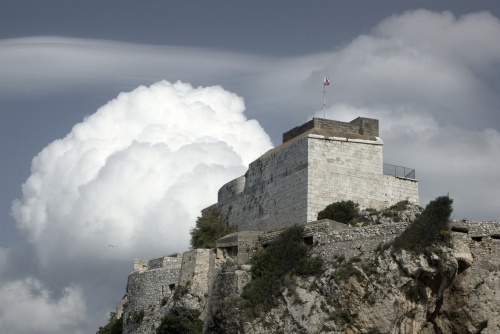
Parsons Lodge
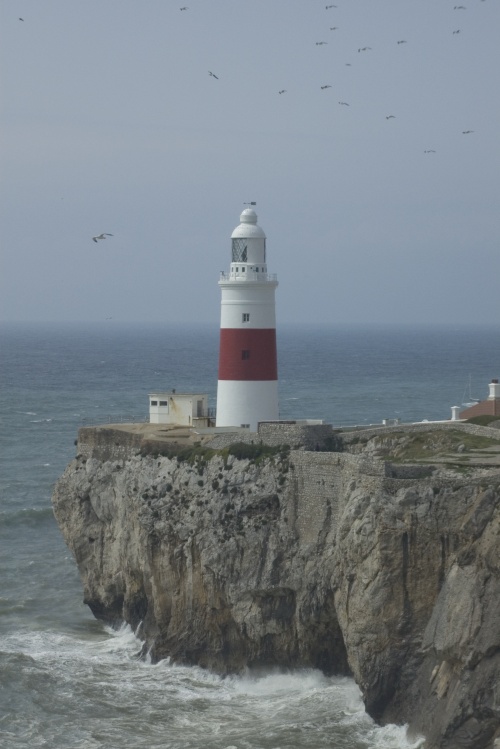
Europa Point
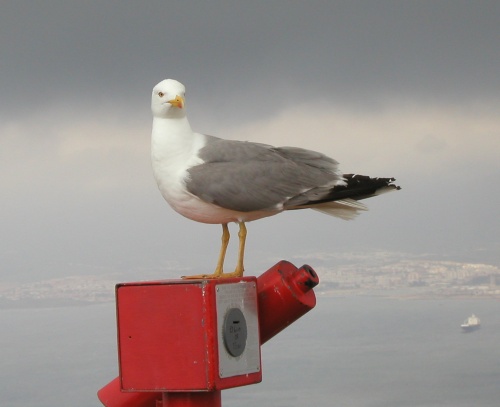
A seagull poses at the top of the Rock

It's a tiring life being such a heavily photographed Ape
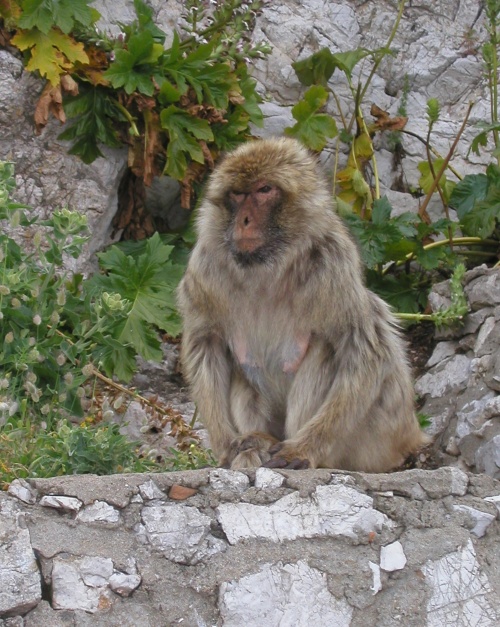
This Ape keeps a lookout over the Rock
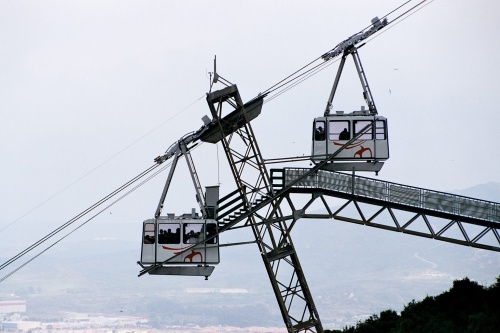
The cable car takes you to the Apes in no
time.